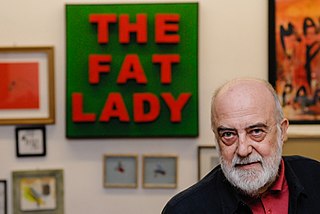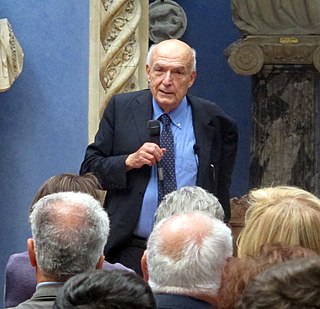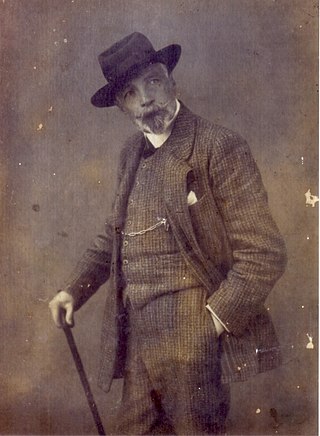
Marsala is an Italian town located in the Province of Trapani in the westernmost part of Sicily. Marsala is the most populated town in its province and the fifth in Sicily.

Giovanni Florio (1552–1625), known as John Florio, was an English linguist, poet, writer, translator, lexicographer, and royal language tutor at the Court of James I. He is recognised as the most important Renaissance humanist in England. Florio contributed 1,149 words to the English language, placing third after Chaucer and Shakespeare, in the linguistic analysis conducted by Stanford professor John Willinsky.

The Cuntrera-Caruana Mafia clan was a Mafia clan of the Cosa Nostra and held a key position in the illicit drug trade and money laundering for Cosa Nostra in the 1980s and 1990s. The Italian press baptized the clan as "The Rothschilds of the Mafia" or "The Bankers of Cosa Nostra".

The Simonetti family is an Italian noble family with origins in Tuscany. During the 12th century different branches in Florence, Terni, Lucca, Pistoia and Pescia developed. Other famous branches of this family were established in Jesi, Palermo, Milan and Bologna.

Nico Perrone is an Italian essayist, historian and journalist. He firstly discovered papers on the plot for killing Enrico Mattei, the Italian state tycoon for oil in the 1950s.
Michelangelo Florio (1515–1566), born in Florence, dead in Soglio, was the son of a Franciscan friar, before converting to Protestantism. He was a pastor in both England and Switzerland, and father of the renaissance humanist John Florio.
Transculturalism is defined as "seeing oneself in the other". Transcultural is in turn described as "extending through all human cultures" or "involving, encompassing, or combining elements of more than one culture".

Igino Giordani was an Italian politician, writer and journalist, born at Tivoli. He was also a significant figure in the Focolare Movement.
Santi Paladino was an Italian journalist, politician and writer, who is best known for his theory that Michelangelo Florio was the real author of the works of Shakespeare, a view he propounded in several publications from 1927 on.

Ugo Carrega was an Italian artist and poet. Carrega was one of the main exponents of visual poetry, although he preferred the term "New Writing", an experimental form of writing that combines signs of different extraction. Carrega was active mainly in Milan, where he founded the cultural centers Centro Suolo (1969), Centro Tool (1971), Mercato del Sale (1974) and Euforia Costante (1993). He also founded and directed the art magazines Tool (1965), Bollettino Tool (1968), aaa (1969) and Bollettino da dentro (1972).

The Archivio di Nuova Scrittura is a cultural association founded in 1988 in Milan, Italy by art collector Paolo Della Grazia. The archive preserves a large artistic and documentary heritage about any form of artistic expression featuring the use of both the word and the sign. Born from the encounter between Della Grazia and artist Ugo Carrega, in the 1990s the ANS became the main Italian research center on visual poetry, organizing exhibitions, meetings and other cultural events. In 1998 the Archivio di Nuova Scrittura was deposited in part at the Mart in Rovereto and in part at the Museion in Bozen. The artwork section of the ANS includes about 1,600 works by international artists at Mart and about 2,000 at Museion. The ANS archives preserve, apart from the internal archive of the association, the Fraccaro-Carrega fonds, containing the papers of collector Marco Fraccaro and visual poet Ugo Carrega. The library section, preserved at Mart, contains more than 18,000 volumes, among them 600 artist's books and hundreds of futurist first editions, and 600 art magazines including about 300 international artist's magazines.

This article contains material translated from the Italian Wikipedia's version of this page.

Antonio Paolucci is an Italian art historian and curator. In 2007 he was appointed director of the Vatican Museums by Pope Benedict XVI, a post he held until 2017 when he retired and was replaced by his former deputy, Barbara Jatta. In the course of his career Paolucci has worked also in Florence, Venice, Verona, Mantua and other Italian cities in national art and cultural institutions. He has written many books and articles on art history and made television appearances on a variety of programs to explain and promote art. He is the recipient of numerous awards for his work.
The Crollalanza theory of Shakespeare's identity posits that Shakespeare was an Italian called Michelangelo Florio a.k.a. "Crollalanza", whose mother's family name is variously given as Crollalanza or Scrollalanza ("shake-speare"). He is said to have emigrated to England where he became William Shakespeare of Stratford-upon-Avon. First proposed in the 1920s by Santi Paladino, who claimed Michelangelo Florio was involved in creating Shakespeare's works, the Crollalanza hypothesis has gone through several permutations and developments. In most recent versions, the character's birthplace has moved from the North to the South of Italy. Paladini suggested that Michelangelo Florio was the real author of Shakespeare's works. But historical documents written by Michelangelo Florio himself disproved those claims. Independent filmmaker Alicia Maksimova released in 2016 a documentary film Was Shakespeare English?, covering this topic, which lacks scholarly support.

Raimondo Lanza di Trabia was an Italian nobleman, soldier and sportsman. Member of an important Sicilian noble family, he was chairman of the football team Palermo Football Club from 1951 to 1952.

Michele Catti was an Italian artist, considered one of the most important Sicilian landscape painters of the Belle Époque.

Rinaldo Bonanno (1545-1600) was an Italian sculptor. Born in Raccuja, he is notable for his work in Sicily in the second half of the 16th century. His whole oeuvre was heavily influenced by the Tuscan tradition and the style of Michelangelo, but combined these with elements of the late Gothic style and influences from the work of Gagini. Despite his 'archaizing' traits, he is considered one of the best sculptors active in that era in Sicily.

The Sicilian Renaissance forms part of the wider currents of scholarly and artistic development known as the Italian Renaissance. Spreading from the movement's main centres in Florence, Rome and Naples, when Renaissance Classicism reached Sicily it fused with influences from local late medieval and International Gothic art and Flemish painting to form a distinctive hybrid. The 1460s is usually identified as the start of the development of this distinctive Renaissance on the island, marked by the presence of Antonello da Messina, Francesco Laurana and Domenico Gagini, all three of whom influenced each other, sometimes basing their studios in the same city at the same time.

The Florian theory of Shakespeare authorship holds that the Protestant pastor Michelangelo Florio (1515–1566) or his son the English lexicographer John Florio (1552–1625), or both, wrote the plays of William Shakespeare (1564–1616). First thought up in 1927, the idea placed both Florios among the over 80 alternative candidates proposed since mid-19th century as the secret authors of the works of Shakespeare. The intertextual relations between the respective works of John Florio and Shakespeare have been intensely investigated by scholarship but, at the same time, have given rise to 'persistent pseudo-scholarly' attempts. Scores of works of "biographism", proposing different candidates and using similar arguments, have emerged since the mid 19th-century to question Shakespeare's authorship, but no one in his own time entertained any doubts that he was the author of his works.












